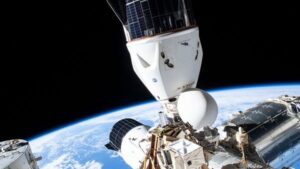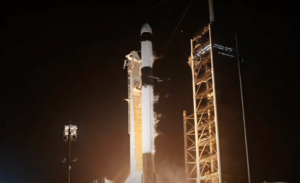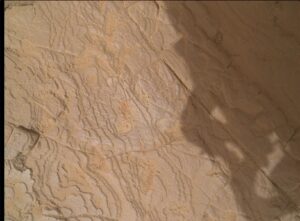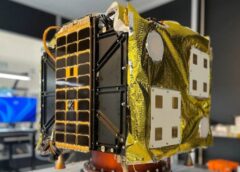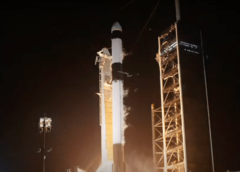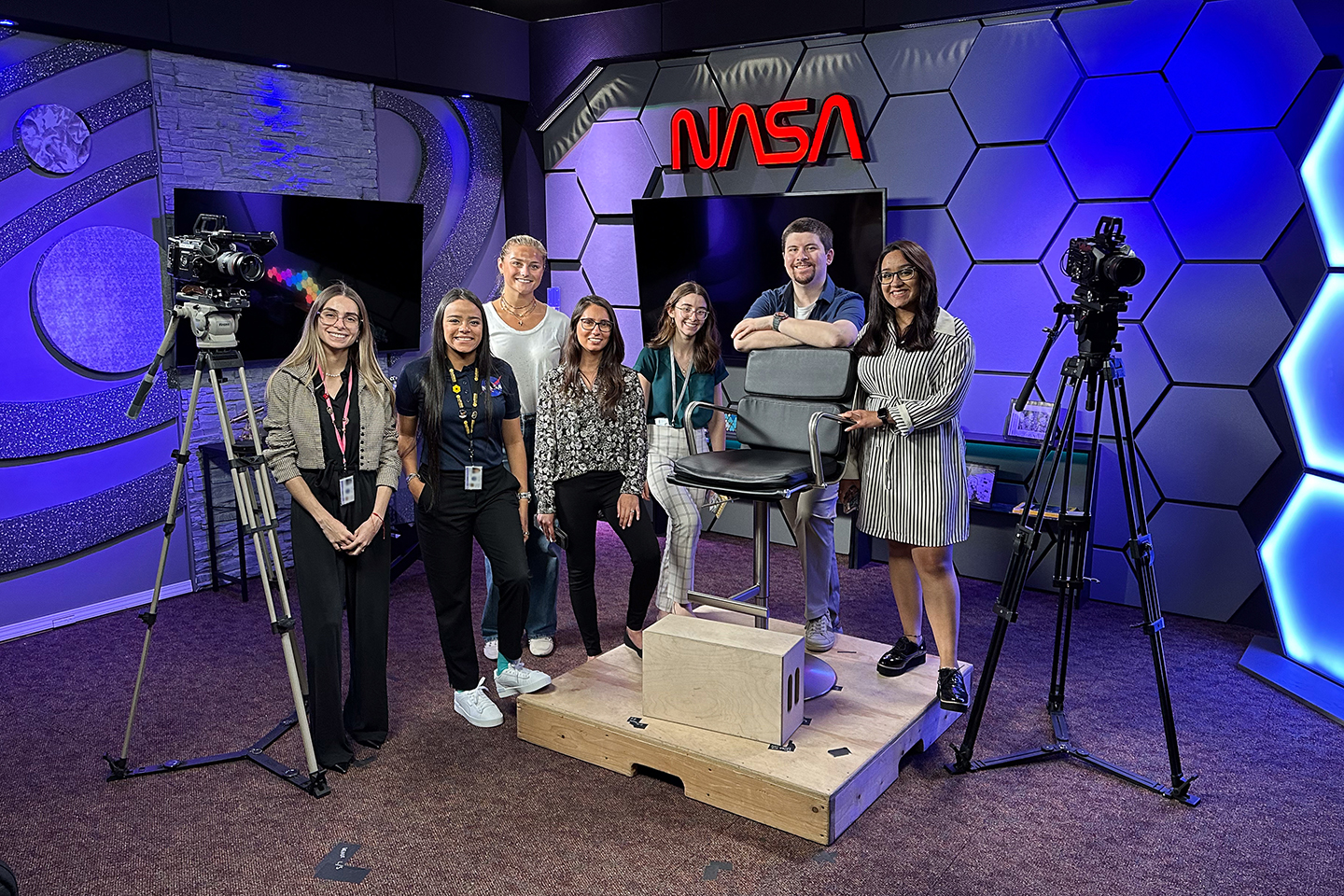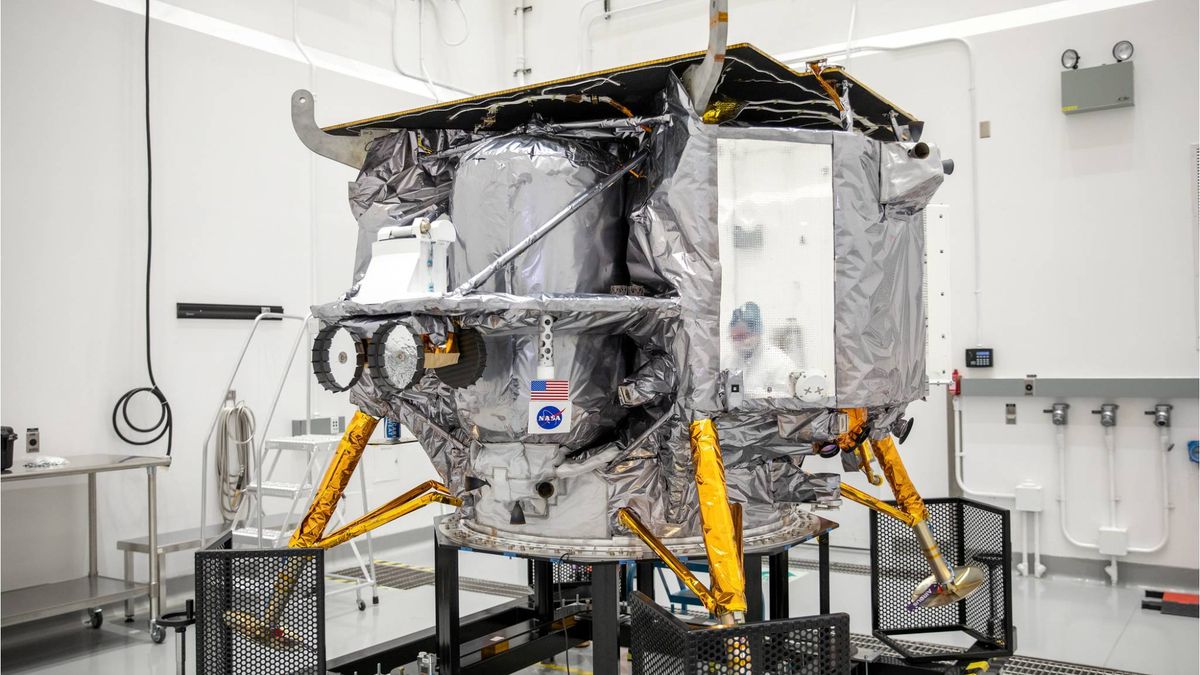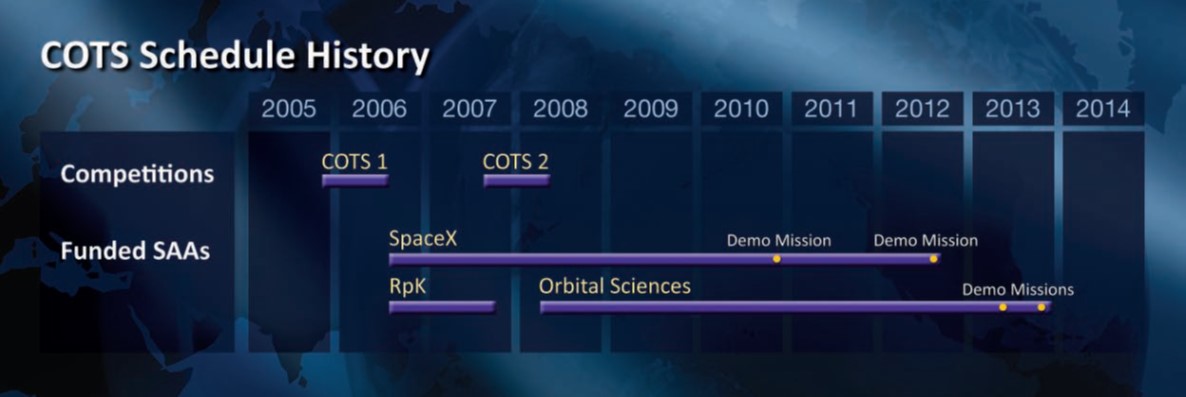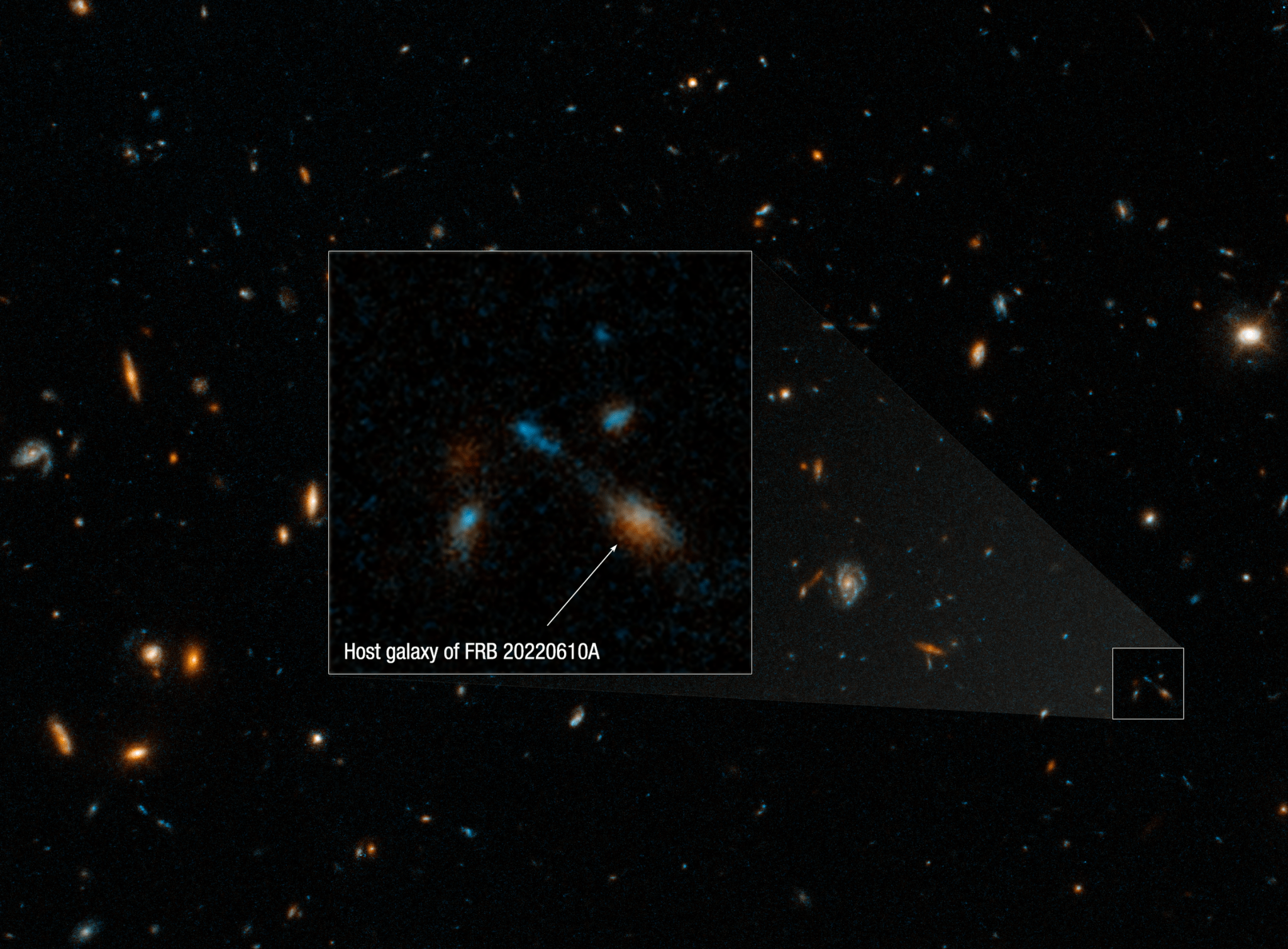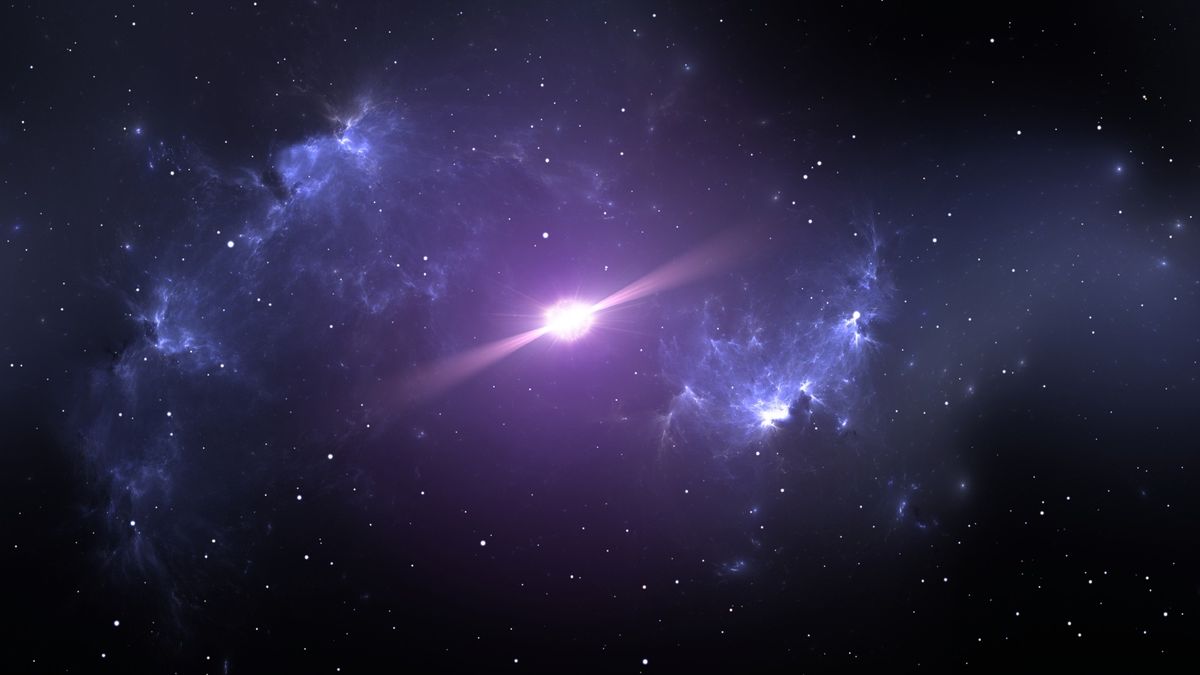4 min read Preparations for Next Moonwalk Simulations Underway (and Underwater) GSFC summer interns NASA is celebrating National Mentoring Month by recognizing the importance of mentors to students and young professionals whose careers are beginning to take off. Mentors help their mentees gain real-world experiences, make valuable connections, and find the types of roles best suited to their strengths and skills. To learn more about early career takeaways, we spoke to three NASA mentors: Renita Fincke, NASA biomedical research projects engineer at Johnson Space Center in Houston; Wade Sisler, executive…
Read MoreHow giant impacts shaped the formation of the solar system’s planets
If you want to build a planet, you’re going to have to get your hands dirty. That’s the lesson from a recent paper, which outlines just how vital giant impacts are to the formation of planets. Astronomers still aren’t exactly sure how planets get their start. Initially, star systems are just clouds of gas and dust swirling around a newborn star. Some of that gas coalesces to form the seeds of planets. Over millions of years, trillions of those seeds merge, becoming ever larger and attracting their neighbors. At a…
Read More1st ‘interstellar tourism campaign’ urges aliens to visit Lexington, Kentucky
Hey, aliens! Lexington, Kentucky would be a good place to spend your next deep-space vacation. This was the message that a group of Kentucky scientists, linguists and scholars recently beamed at the TRAPPIST-1 system, which lies 40 light-years from Earth and harbors multiple potentially habitable planets. The missive represented the very first interstellar travel advertisement, according to VisitLEX, the group behind the effort. Related: The search for alien life VisitLEX’s tourism team at the Lexington Convention and Visitors Bureau partnered with the Cornett ad agency to devise a playful campaign…
Read MoreStuck valve may have doomed private Peregrine moon lander mission, Astrobotic says
Astrobotic has homed in on a potential cause for the problems plaguing its Peregrine moon lander. Peregrine launched early Monday morning (Jan. 8) atop United Launch Alliance’s (ULA) new Vulcan Centaur rocket, with the goal of becoming the first private spacecraft to land softly on the moon. That dream was dashed, however, by a propellant leak that sprang up shortly after Peregrine deployed from the rocket’s upper stage. Astrobotic has been troubleshooting and analyzing the issue ever since, and the company may now know what happened. “Astrobotic’s current hypothesis about…
Read More10 Years Ago: The First Operational Cygnus Cargo Mission to the Space Station
To replace the cargo and crew transportation services to and from the International Space Station following the retirement of the space shuttle in 2011, the United States developed a novel approach to procure those services from American commercial entities. On Jan. 9, 2014, Orbital Sciences Corporation, one of two companies selected initially to provide cargo transportation services, launched the first operational mission of its Cygnus spacecraft. During its one-month stay at the space station, the onboard Expedition 38 crew unloaded its cargo and then filled it with trash and unneeded…
Read MoreNASA Ames Awards Task Order Modification for Wind Tunnel Upgrades
NASA has awarded a task order modification to the Aerospace Testing and Facilities Operations and Maintenance (ATOM-5) contract to Jacobs Technology Inc., of Tullahoma, Tennessee, to provide the agency’s Ames Research Center in California’s Silicon Valley, with an upgrade to the center’s Unitary Plan Wind Tunnel main drive speed control variable frequency drive. The ATOM-5 award is a cost-plus fixed-fee indefinite-delivery indefinite-quantity contract that supports several experiments in the ground-based aerospace facilities at Ames, including wind tunnels, high-enthalpy arc jet facilities, and the Sensor and Thermal Protection System Advanced Research…
Read MoreHubble Finds Weird Home of Farthest Fast Radio Burst
5 min read Hubble Finds Weird Home of Farthest Fast Radio Burst A NASA Hubble Space Telescope image of the host galaxy of an exceptionally powerful fast radio burst, FRB 20220610A. Hubble’s sensitivity and sharpness reveals a compact group of multiple galaxies that may be in the process of merging. They existed when the universe was only 5 billion years old. FRB 20220610A was first detected on June 10, 2022, by the Australian Square Kilometer Array Pathfinder (ASKAP) radio telescope in Western Australia. The European Southern Observatory’s Very Large Telescope…
Read MoreA “Green Monster” Lurks in Star’s Debris
For the first time, astronomers have combined data from NASA’s Chandra X-ray Observatory and James Webb Space Telescope to study the well-known supernova remnant Cassiopeia A (Cas A). This work has helped explain an unusual structure in the debris from the destroyed star called the “Green Monster,” because of its resemblance to the wall in the left field of Fenway Park.
Read MoreNeutron stars could be the ultimate dark matter detectors
Astronomers continue to struggle in their hunt for dark matter, the elusive and mysterious form of matter that dominates the mass of the universe. But one astronomer proposes that, instead of building gigantic, expensive experiments on Earth, we should try another method of searching for dark matter: Looking to the stars. Multiple independent lines of evidence suggest that dark matter exists. Something is keeping stars contained within galaxies despite their enormous speeds. Something is keeping galaxies contained within clusters despite their excess motion. Something is bending the path of light…
Read MoreNASA funds Venus sample-return, interstellar probes and other far-out space tech
NASA has awarded funding to 13 innovative space technology concepts that could shape future missions to Venus, Mars and worlds beyond our solar system. The space agency’s NIAC (NASA Innovative Advanced Concepts) program supports the development of early-stage technology ideas from America’s innovators and entrepreneurs. Each Phase 1 award is worth up to $175,000, according to a statement from NASA. “The daring missions NASA undertakes for the benefit of humanity all begin as just an idea, and NIAC is responsible for inspiring many of those ideas,” NASA Associate Administrator Jim…
Read More

